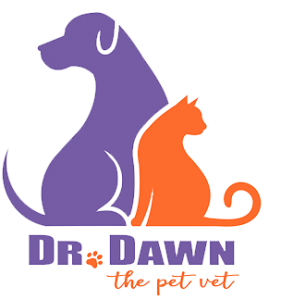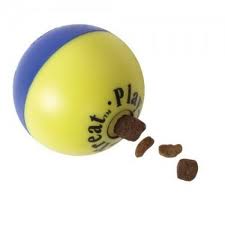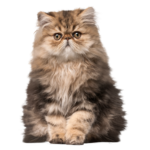CATS AND OBESITY: Let’s address the epidemic
Before I start expounding on the “meat and potatoes” (pun intended) of the issues I face on a daily basis, regarding obesity in my feline patients, I think the results of a recent survey are quite interesting. Also, I think the two issues are related.
Royal Canin USA Inc. , a pet food manufacturer, discovered the following in their survey of cat owners:
– Nearly 50% brought their pet home without researching its lifestyle
– 61% believed that cats adapt easily to the owner’s lifestyle.
-A majority of respondents were unaware that cats are active every day, marking territory, hunting and hiding
– Half did not think about their cat’s health each day.
-72% don’t consider their cat’s health when selecting pet food.
– 93% don’t factor in their cat’s breed when purchasing food.
-More than half ignored their cat’s age when making food decisions.
– 42% considered flavor to be important when choosing cat food.
– 15% admitted taste-testing cat food (!!!!!!! )
They surmised that many owners felt cats were lazy and would eat anything. As a veterinarian, I see it more as an opportunity to better educate cat owners about their cats, and help them better select the right food, in the right amounts for their cat. There are huge variations in lifestyles of indoor vs outdoor cats, for example. The diets and caloric intake should vary as well.
I know many cat owners, friends and clients alike, that comment on how guilty they are that their cats are overweight. They even avoid going to the vet because they know they are going to have to hear again how bad it is that their cat has gained more weight, … It is upsetting to hear, because we are missing two opportunities. One to reverse the problem, and another, to miss other health problems potentially present when they don’t come in.
The facts:
According to a 2013 report from Banfield, a hospital chain, the prevalence of excess body weight has increased 90% in cats since 2007. With more than 37% of households owning cats, this means millions of cats are overweight or obese.
This puts them at risk of:
diabetes , cancer, oral disease, kidney disease, urinary tract infections, certain liver diseases and arthritis. Many develop skin conditions because they cannot groom properly. Cardiac disease may soon be added to the list.
How did we get here?
Most weight gain is gradual and unrecognized. Many clients perceive body condition differently than veterinarians do, incorrectly assuming they are less overweight than they are. I find they often don’t realize how this will adversely affect their cat’s quality of life. Have you ever been in this situation? Have you seen the body score posters and realized that your cat is, in fact, on the obese spectrum? Many of my clients have been shocked with that knowledge. That is part of the battle. Next is convincing them that they need to make a change. And lastly, and most difficult, HOW.
This is a touchy subject. I don’t know anyone who does not address these issues, at some point, personally. If your veterinarian makes a suggestion about your cat, it is just that. We are not judging you and your eating habits, cultural preferences or lifestyle. Yet, the recommendations for weight loss are universal.
1. Your cat is eating more calories than it needs.
2. Your cat either needs to burn more calories and become more active, and eat less calories, or both.
Getting to the type of diet, dry vs. canned, quality, etc., can, at times seem insurmountable. I try to focus on two things. Encourage them to be more active, which is good all around and will make them happier. And, start with a good quality diet, determine the caloric content per can/cup, and most importantly, figure out how much they need for their lifestyle and give them that.
I am a big fan of canned cat food. I think that many clients still think that dry food is best, because it is better for their cats’ teeth. That might be true if cats were actually chewing the dry food, but often they are not. Brushing teeth is good for cat teeth, but that is a discussion for another day. Dry food is more calorie dense. Cats often are not big water drinkers, and eating canned food will afford them more water consumption, and hydration. Some dry food is fine, and I am a big fan of certain prescription diets that are dry and help prevent and reverse dental disease, if dietary restrictions are not present. They will chew this kibble and reap the benefits, which I have seen in many patients. Some cats will not eat canned food, or vice versa.
More exercise and puzzle treat toys are great if the cat will use them. Self feeding contraptions are a very common contributor to obesity. Personally, I am not a fan.
 Other tips include hiding kibble around the house so the cat has to “hunt” for its food is helpful and is pleasurable to many cats. Put food on the kitty tree or on a shelf to encourage climbing. Spread meals out throughout the day. Automatic feeders are ok if they are preset with the appropriate amount. Yet they can only dispense dry food. These feeders are also good in that they help the cat associate the feeder with food, not the owner. On that note, play with your cat to demonstrate love and attention, rather than food, with you.
Other tips include hiding kibble around the house so the cat has to “hunt” for its food is helpful and is pleasurable to many cats. Put food on the kitty tree or on a shelf to encourage climbing. Spread meals out throughout the day. Automatic feeders are ok if they are preset with the appropriate amount. Yet they can only dispense dry food. These feeders are also good in that they help the cat associate the feeder with food, not the owner. On that note, play with your cat to demonstrate love and attention, rather than food, with you.
What you need is a plan…
The most successful weight loss stories have been those where we have sat down, the family and myself, and come up with a specific calorie goal per day, determined together after discussing each patient’s lifestyle. A quality diet is key, which one would think is intuitive. Frequent communication and follow up ensures you are on the right path and takes the guess work out. And most importantly, the entire family needs to be on board. One person should not be feeding twice as much as someone else, for example. If the following recommendations don’t sound familiar to you from your visits to your veterinarian, they should.
1. Measure the pet’s weight and body condition score and talk about good nutrition starting with first visits, even as kittens.
2. Assess a full diet history including treats, table food and any medication, which is often given with food. Calculate exactly how many calories the cat is receiving. Most healthy, active adult cats only need between 200 and 300 calories a day. It’s not much, and it doesn’t take much to go over that and lead them down the path to obesity.
3. Reduce calories at the time of spay/neuter when energy requirements decrease, but don’t change to an adult food until at least 1 year of age.
4. Address any body condition score over ideal. Losing a small amount of weight is much easier than overcoming significant obesity.
5. If weight loss is not successful or other diseases are present, think about consulting with a veterinary nutritionist, or a vet with a strong interest in that subspecialty.
Most of the time, diet changes, or prescription diets are not necessary once we identify other aspects of the cat’s routine that could and should be changed. Sometimes, though, prescription diets are indicated.
As usual, I hope you found this helpful.
Dr. Dawn
Please share and subscribe here







